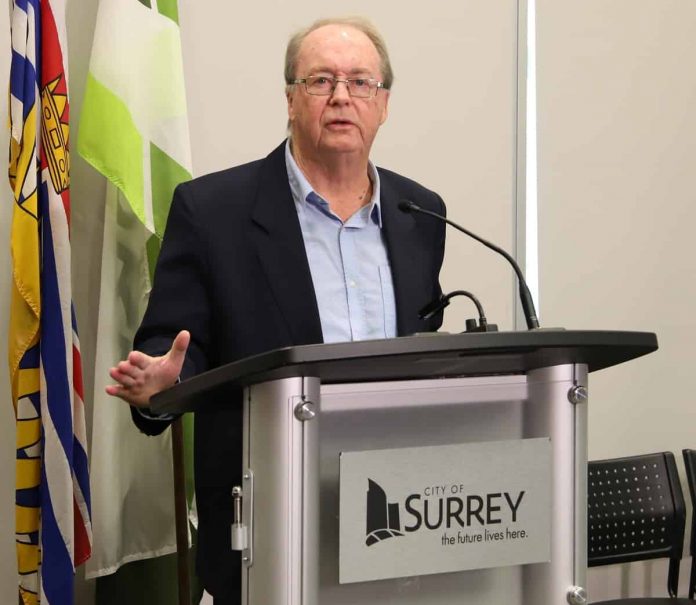
Photo by Jay Sharma of Mahi Photo Studio
THE City of Surrey has acquired 142.48 acres (57.66 hectares) of land of high ecological value for the preservation of regional biodiversity. Located at 18793 32nd Avenue in South Surrey, this land acquisition was made possible through a high level of collaboration between the City and the British Columbia Ministry of Forests, Lands, Natural Resource Operations and Rural Development.
“Protecting our green spaces as Surrey continues to grow is a priority for City Council and I,” said Surrey Mayor Doug McCallum. “By securing this land we have permanently protected a mix of deciduous and coniferous forests and habitat for a variety of animals. I want to thank the BC Government for working with us to preserve this environmentally diverse area of Surrey.”
“This crown land sale works for the City and for the Province,” said Forests, Lands, Natural Resource Operations and Rural Development Minister Doug Donaldson. “While adding to the City of Surrey’s Biodiversity Conservation Strategy, the revenue from the sale will go to fund B.C. government priorities.”
The recently acquired land is identified in Surrey’s Biodiversity Conservation Strategy (BCS) as a hub to be protected for its natural assets. The land contains several watercourses, two of which are fish bearing. It is also part of an important north-south habitat connector between the Nicomeckl River to the north and the Little Campbell River to the south.
The BCS is a policy document used to evaluate biodiversity in the City and prioritize its conservation and management. A Green Infrastructure Network (GIN) forms the backbone of the BCS. A GIN is an interconnected network of open space and natural areas that conserves ecosystem values and functions, and provides benefits to people and wildlife. The GIN includes natural forested areas, streams, and riparian and upland corridors that together function as a system of “hubs’” “sites’” and connecting “corridors.” The GIN identifies over 3,640 hectares (9,000 acres) of forests, streams, ponds, wetlands, marine foreshore, old fields, agricultural land, and urban environments. Approximately 2,020 hectares (5,000 acres) (about 55%) are City or regionally owned park land.
The full Corporate Report can be viewed here.













